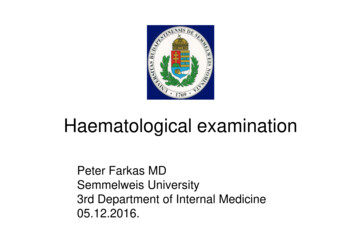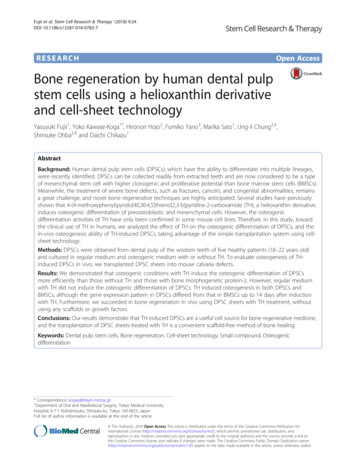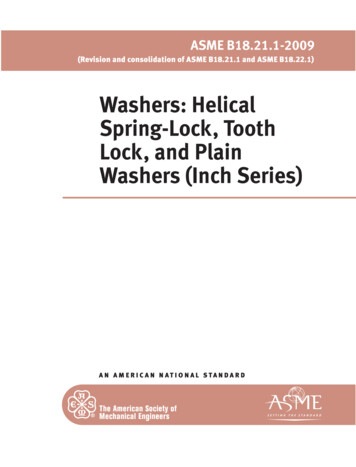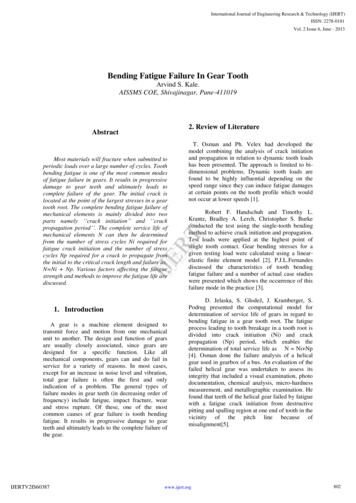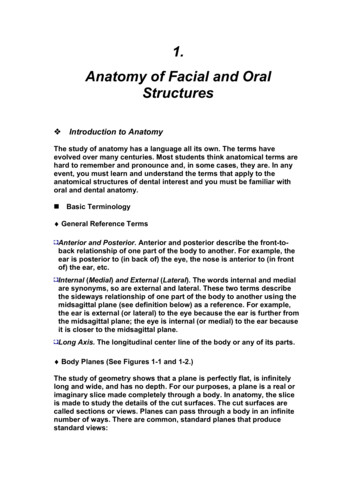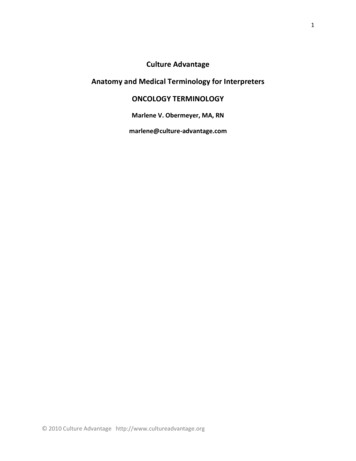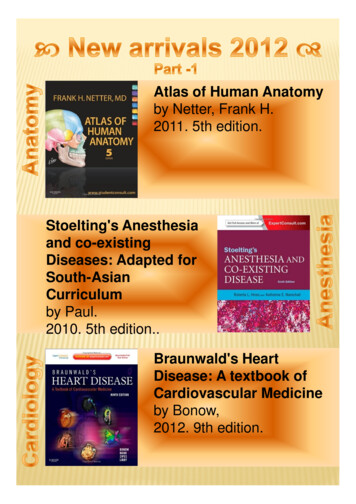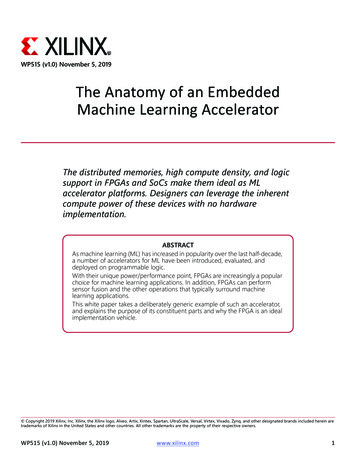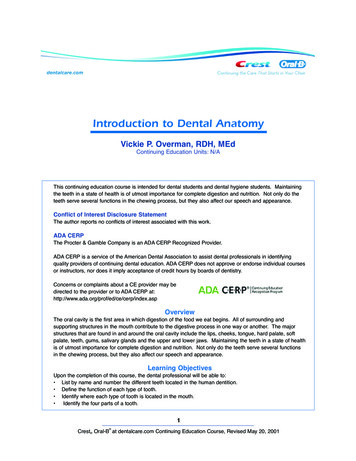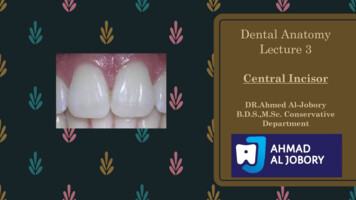
Transcription
Tooth and PulpAnatomyDr. Zsuzsanna Tóth Ph.D.Semmelweis UniversityDept. of Conservative Dentistry
decidouspermanent
Deciduous teeth
Permanent teeth
www.toothatlas.com
lpakammerPulpapulpcementZementum
MORPHOLOGY of the PULP
ameloblastsenameldentinodontoblasts
Dentin Structure dentin is a calcified connective tissuepenetrated by millions of tubules; their density varies from 40,000 to 70,000tubules per square mm tubules are from 1 μm in diameter at thedentinoenamel junction to 3 μm at their pulpalsurface and contain fluid that has a compositionsimilar to extracellular fluid
FUNCTION of the PULPThe pulp lives for the dentin andthe dentin lives by the grace of the pulp Nutrition of the dentinInnervation of the pulp and dentinFormation of the dentinDefense of the tooth and the pulp
PULP TISSUE connective tissueobviously rich in fluidhighly vascularizedcellscollagen fibresvesselsnerves
Supportive Elements Pulpal Blood Supply. pulp blood vessels do not reach a large size. At the apex and extending through the central pulp, one ormore arterioles branch into smaller terminal arterioles ormetarterioles that are directed peripherally Before the arterioles break up into capillary beds,arteriovenous anastomoses often arise to connect the arteriole directly to a venule.These arteriole-venule shunts are identified by the presenceof irregularly oriented myoepithelium-
PULP TISSUE principal support system for the peripheral pulp, whichincludes the large vessels and nerves from which branchesextend to supply Plexuses of capillaries and small nerve fibers ramify inthis subodontoblastic layer pulp showing major support systems, including arterioleswith a muscular wall, thin-walled lymphatics , venules ,and nerve bundles containing myelinated andunmyelinated nerve
The development of dentin Primer Secunder Tertier
The development of dentin Primer Secunder Tertier/irritationdentin
Reserve CellsThe pulp contains a pool of reserve cells, descendantsof undifferentiated cells in the primitive dentalpapilla. These multipotential cells are likely afibroblast type that retains the capability ofdedifferentiating and then redifferentiating ondemand into many of the mature cell types.
FibroblastsMost of the cells of the pulp arefibroblasts. Pulpal fibroblasts arespindle-shaped cells with ovoid nuclei.These cells exhibit wide variation intheir degree of differentiation.Principal producers of collagen
Defense Cells histiocytes and Macrophagesundifferentiated mesenchymal cellspolymorphonuclear Leukocytes.lymphocytes and Plasma Cellsmast cellsodontoblasts
Odontoblasts In the puplchamber50 000 cells / mm2 In the rootsignificant less
Caries medialocalized irregularirritative dentin
DenticulusDenticulus
Tooth notation Zsigmondy-Palmer, Chevron,Set-Square system The FDI two-digit system(international method) European, Scandinavian,Haderup system American (universal) system
FDIFederation Dentaire InternationaleWHO World Health OrganizationIADR International Association for DentalResearch
Zsigmondy-Palmer, Chevron, Set-Squaresystem8 7 6 5 4 3 2 18 7 6 5 4 3 2 11 2 3 4 5 6 7 81 2 3 4 5 6 7 8RightV IV III II I I II III IV VV IV III II I I II III IV VLeft
FDI18 17 16 15 14 13 12 1121 22 23 24 25 26 27 2848 47 46 45 44 43 42 4131 32 33 34 35 36 37 38RightLeft55 54 53 52 51 61 62 63 64 6585 84 83 82 81 71 72 73 74 75
European, Scandinavian,Haderup system8 7 6 5 4 3 2 1 1 2 3 4 5 6 7 8Right8- 7- 6- 5- 4- 3- 2- 1-Left-1 -2 -3 -4 -5 -6 -7 -8
USA1 2 3 4 5 6 7 832 31 30 29 28 27 26 25Right9 10 11 12 13 14 15 1624 23 22 21 20 19 18 17Left
of undifferentiated cells in the primitive dental papilla. These multipotential cells are likely a fibroblast type that retains the capability of dedifferentiating and then redifferentiating on demand into many of the mature cell types. Fibroblasts Most of the cells of the pulp are fibroblasts. Pulpal fibroblasts are spindle-shaped cells with ovoid nuclei. These cells exhibit wide variation in .
